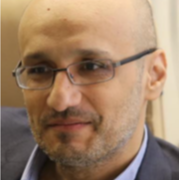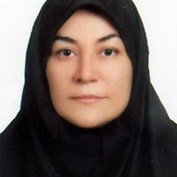1. Background
After graduation, physicians should be able to provide professional and safe services without the need for supervision by their clinical professors (1). However, this is not always achieved as desired. The distance from the desired situation to the real situation is mainly due to the lack of competent medical education, mandating a competency-based medical education (CBME) approach (2, 3). A practical explanation of CBME is that professional qualifications are not acquired after a fixed period (e.g., 4 years of residency); they require a change not only in the knowledge and attitudes of the trainees but also in their professional behavior (4-6); however, the outcome of training has the central role than its time length (7). This approach requires a practical and systematic method along with guaranteeing the content of training, especially in terms of professional capabilities. The main required competencies (i.e., the 6 main core competencies) are the required infrastructure in the CBME approach.
Entrustable professional activities (EPAs) are a relatively novel concept in medical education. Starting in 2005, it developed too many fields of medical education (8-10), including anesthesiology, to ensure appropriate milestones of clinical training (11-13). However, due to the diversity and the culture of health care in each country, a national model needs to be designed; this model should be based on the international forum, adding the national experiences (14). EPAs are the cornerstones of CBME.
2. Objectives
In the current study, we sought to develop a national model of EPAs based on the experiences in the Department of Anesthesiology and Critical Care (DACC), Shahid Beheshti University of Medical Sciences (SBMU).
3. Methods
This research project was approved by the Research Ethics Committee, Research Deputy, SBMU, Tehran, Iran (code: IR.SBMU.RETECH.REC.1400.1040). However, the primary EPA design plan was proposed in 2019 with the following steps as a career roadmap for the project:
(1) The joint task force (JTF) was developed, including DACC, SBMU faculty members, Medical Education Program Development specialists, and Faculty of Medical Education, SBMU; (2) the joint task force took part in the whole process and held 20 consensus sessions added, with extra sessions preparing the drafts; (3) adopting the global approaches used for this goal, including the Iranian modifications to cope with national goals by JTF; (4) prioritizing the most common topics in the clinical education of residents through a Delphi method; all titles derived from competencies were listed by National Anesthesiology Board; (5) a multi-step table was defined, using the Accreditation Council for Graduate Medical Education (ACGME) 6 core competencies approach, to create the structure of each EPA; the main topics in the above table were “specification”, “relevant competency domain(s)”, “required knowledge content”, “minimum required skills”, “attitudes and experience”, “sources of information to assess progress”, and “expected entrustment or supervision level” (1, 15, 16); (6) the drafts of EPAs were prepared by each of the JTF members alone or in combination with other colleagues according to their field of expertise; (7) the drafts were discussed and critically appraised egarding both content and the format of EPAs in the same JTF in further sessions; (8) a 1-day 8-hour workshop was designed to discuss the concept and the content of prepared EPAs within the department to involve all the 67 faculty members of the department as stakeholders; (9) in the follow-up, 5 of the 20 sessions were held to assess the validity and appropriateness of EPA drafts; (10) the revised drafts were circulated among the members of the department, and feedback was used to update the drafts.
The above approach led the project to the primary EPA design plan, which was used as a career roadmap for the project. Then, the texts were developed based on previous experiences in international studies and thrived, reviewed, and revised by a broad team of faculty in a daily workshop according to a consensus-based approach.
4. Results
Using previous studies, the current project resulted in 14 topics for EPA as the first round of targeting topics for anesthesiology residents (Table 1); they were standardized considering national standards.
| No | Title of Entrustable Professional Activities | Postgraduate Year Assigned to Entrustable Professional Activities |
|---|---|---|
| 1 | One-lung ventilation using a double-lumen tube | 2 and 3 |
| 2 | Lung ventilation using a bronchial blocker | 2 and 3 |
| 3 | Preoperative patient evaluation | 1, 2, 3, and 4 |
| 4 | Patient evaluation and preparation for regional anesthesia of the lower limb in orthopedic surgery | 2, 3, and 4 |
| 5 | Maintenance of patients during regional anesthesia in lower limb orthopedic surgery | 1, 2 and 3 |
| 6 | Patient evaluation and preparation for regional anesthesia of the upper limb in orthopedic surgery | 1 and 2 |
| 7 | Maintenance of patients during regional anesthesia in upper limb orthopedic surgery | 1, 2 and 3 |
| 8 | Anesthesia considerations in elective craniotomy | 2 and 3 |
| 9 | Tasks to be considered in massive blood transfusion | 1, 2 and 3 |
| 10 | General anesthesia in the elective cesarean section without underlying disease | 1, 2 and 3 |
| 11 | Advanced cardiopulmonary resuscitation in adults | 1 and 2 |
| 12 | Diagnosis and treatment of respiratory complications in postanesthesia care unit (PACU) | 1, 2 and 3 |
| 13 | Spinal Anesthesia tasks for elective surgeries in adult patients | 1, 2 and 3 |
| 14 | Mask ventilation in the pediatric patient (from neonates up to 14 years) | 2, 3 and 4 |
List of Entrustable Professional Activity Topics
Despite the core concept of EPA, which is to move from a “time-based” to an “ability-based” learning system, in our Delphi rounds, we decided that each title of EPA should be assessed in specific postgraduate year (PGY) groups of trainees. It means that the earliest a trainee assessed for “one-lung ventilation using a double-lumen tube” is in their PGY2; however, assessing for “general anesthesia in the elective cesarean section without any underlying disease” could take place as soon as the first year of training, based on the rotations and abilities of an individual trainee.
A primary scale called “the Entrustment Scale” was designed to assess the trainee based on the previous models, starting from level 1, which needed the highest support starting from “level 1” and leading to “level 5”; this scale indicated a level-matched approach that could define the appropriate competency and entrustment. To “entrust” the trainee with each “topic”, 2 different examiners in 2 different situations should score the trainee as “level 5”.
Although the initial issues were too general, after difficulties in drafting, they became smaller subgroups. Based on the experience gained in preparing the initial drafts, the group decided to prepare a booklet from this initial draft and use it as a pilot.
5. Discussion
In this study, we described a clear path toward designing and implementing EPAs in anesthesiology residency programs to improve the quality of the graduated residents. However, this study was the first step in developing a list of EPAs in a developing country for anesthesiology residents. However, this is the pilot phase and mandates more steps. The results of this study demonstrated that using a list of essential EPAs for implementing CBME could be easily performed in an academic department, at least as a primary one. However, our study just demonstrated the method of developing the list; however, the results of this approach should be assessed in future studies.
Competency-based medical education is based on a competency-gaining approach without conventional time limits (2, 17); however, this approach mandates creating step-by-step blocks and milestones to create the competency of the trainee.
We are now designing a global system for the whole university, including 9 educational hospitals, to assess the trainees for the above EPAs. Analysis of the final results could take a few years, but over this period, other competencies are also evolving as EPAs by the same group of academics.
There is no doubt that the integration of EPAs into the anesthesiology residency education is a “must” and a basic need for implementing “Competency-based medical training in anesthesiology” (3, 11-13). However, the methodology must be clarified. The current study has described a clear path toward quality improvement in this approach, describing the potential obstacles and the most common paths. Though the basic theory is the same, each country needs its formula to implement the process (11). This study could address a practical formula to improve the quality of “Anesthesiology Residency” programs in Iran.


